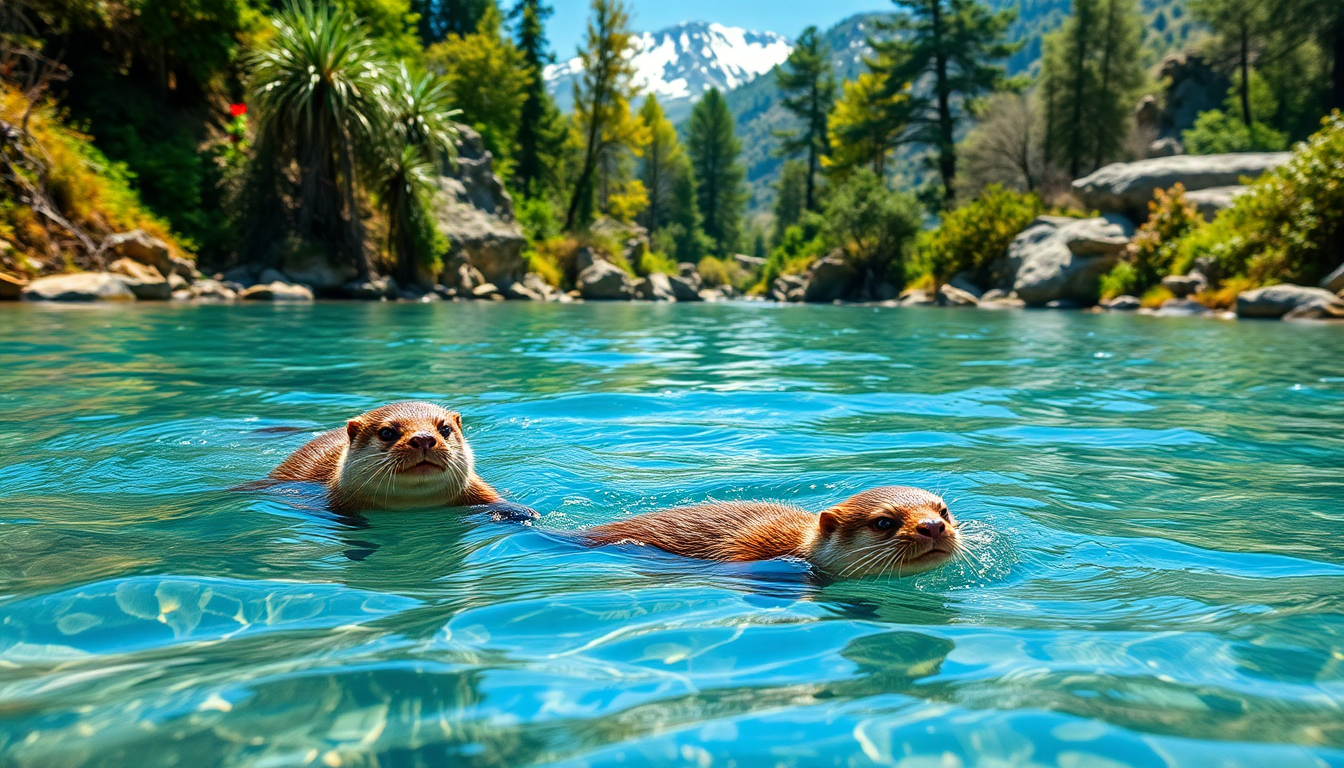Table of Contents
Once thought to be gone for good, the Eurasian otter is making a surprising comeback in Kashmir, much to the delight of wildlife conservationists and environmental enthusiasts alike. Recent sightings by Indian wildlife officials mark a significant turning point for this species, which is currently labeled as ‘near threatened’ by the International Union for Conservation of Nature (IUCN). But what does this mean for the otters and the delicate freshwater ecosystems they inhabit? Let’s dive into the importance of these sightings, the current state of the otter population, and the wider environmental implications.
The Resurgence of the Eurasian Otter
Imagine this: a local teenager captures a stunning video of a Eurasian otter swimming effortlessly against the current of the Lidder River in May 2023. This sighting isn’t just a one-off moment; wildlife officers have reported multiple encounters, hinting at a possible revival of these elusive creatures in the region. Wildlife biologist Nisarg Prakash believes that the growing presence of otters might reflect improvements in local aquatic habitats, possibly thanks to reduced poaching or habitat recovery efforts. Isn’t it amazing how one sighting can spark hope for an entire ecosystem?
Historically, otters thrived across northern India, including the stunning Himalayan foothills. Unfortunately, their numbers have taken a nosedive due to habitat destruction, pollution, and human encroachment. These challenges have led to fragmented populations and rare sightings in recent years. So, the return of the otter in Kashmir is not just a win for this species; it’s a clear reminder of the ongoing need for dedicated conservation efforts.
Understanding the Ecological Impact
So, why should we care about the Eurasian otter? Well, their presence is a strong indicator of ecological health. The return of these otters suggests that water quality and habitat conditions are on the upswing, which is crucial for the sustainability of the entire ecosystem. As apex predators, otters play a vital role in maintaining balance in freshwater environments, regulating fish populations, and promoting biodiversity. How cool is it that these furry creatures can help keep our rivers healthy?
However, the excitement surrounding these sightings comes with a caveat. The otters face significant threats from human activities. Some local residents are concerned about the potential risks posed by the otters, leading to a decline in traditional activities like washing clothes and fishing along the riverbanks. This situation highlights the fragile balance that must be maintained between human activities and wildlife conservation. Can we find a way to coexist?
Future Considerations and Conservation Efforts
As otters reclaim their place in Kashmir, it’s crucial to prioritize their conservation. We need effective measures to protect their habitats from pollution, waste accumulation, and other forms of environmental degradation. Local communities can play a key role in this effort by becoming stewards of their environment and advocating for sustainable practices. Imagine the difference we could make together!
The resurgence of the Eurasian otter is a beacon of hope amid the ongoing challenges faced by many species worldwide. By raising awareness and supporting conservation initiatives, we can ensure that these remarkable creatures continue to thrive in their natural habitats. Are you ready to be part of the solution?
In conclusion, the renewed presence of Eurasian otters in Kashmir is not just a victory for this species; it serves as a crucial reminder of how intertwined wildlife and environmental health truly are. Keeping a watchful eye and taking proactive measures will be essential in safeguarding their future and the ecosystems they call home. Let’s work together to protect our planet!


